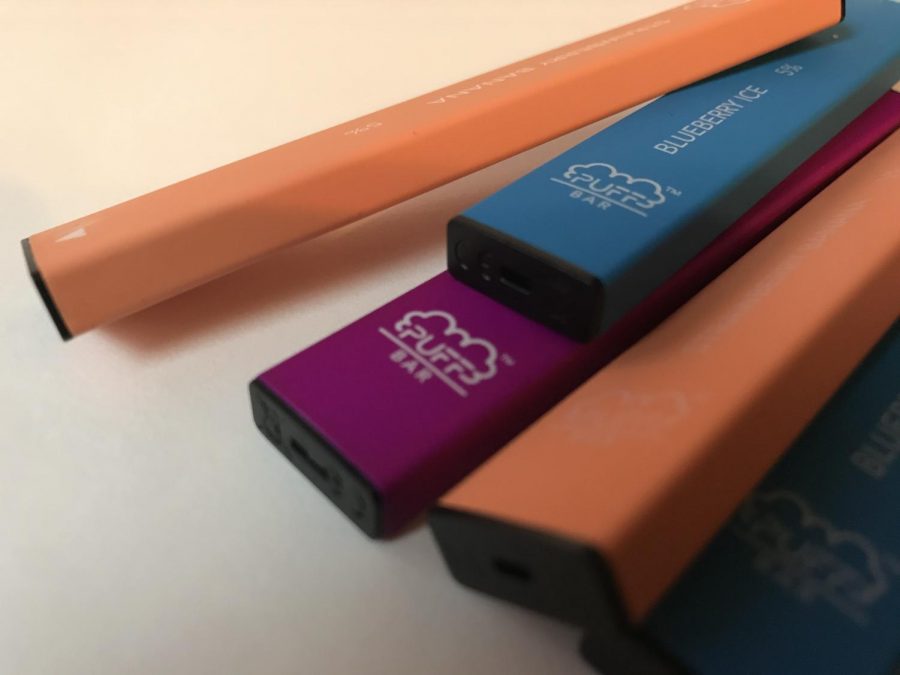Puff Bars are the newest phenomenon of e-cigarettes to take over the market.
Efforts to stop teen vaping have fallen behind due to the fast increase in the variety of vapes offered in the market. Since the introduction of the Juul, teenagers have started to vape a lot more and with the introduction of new brands of e-cigarettes, the number of teen vapers is not going down.
According to the Centers for Disease Control and Prevention, two-thirds of e-cigarette users between the ages of 15-24 did not know vapes contain nicotine. Nicotine is a highly addictive drug that can prevent adolescents’ brains from developing.
Nicotine is only one of the multiple harmful products found in vape products. Diacetyl is another chemical found in flavored vapes. This chemical provides the vape with its flavor. It also comes with the risk of lung disease.
Puff Bars share a lot of similarities with the brand Juul, but the colorful new vapes have really caught the attention of teenagers, most of which are under the legal age to vape.
Juul, in their early years, advertised primarily to minors using younger looking actors in their advertisements. They also used social media to connect with teens and spread their products. The company faced major protests for blatantly advertising to younger generations and Juul pulled most of their flavored pods.
The new Puff Bars were able to fill this hole in the market. Using their flavorful vapes, Puff Bars are able to easily attract minors to their products. The brand has a variety of fruity flavors, such as Blueberry Ice, Banana Ice, Lush Ice, Blue Razz and O.M.G (Orange, Mango, and Guava).
The new vapes come with a price tag of around $10 since they are not very durable products. The price tag makes it easier for underage children to afford. The Puff Bars have around 200 puffs in them, and each bar has around 20 cigarettes worth of nicotine in them.
Even though the Food and Drug Administration enforced the limitation of flavored cartridges created by vape companies, Puff Bars were able to find a loophole in the enforcement guidelines.
President Trump has also passed a partial ban on flavored e-cigarettes on Feb. 5 to decrease the number of teenagers using e-cigarettes, but despite this, the vape companies are still flourishing.
Three years ago, only about one in 10 high schoolers reported using a vape recently. Although in the past year, the ratio has grown to one in four, according to National Public Radio.
In a 2019 National Youth Tobacco Survey, researchers from the FDA concluded teen vaping has become so prevalent that the FDA has classified it as an epidemic. According to the study, an estimated 5.3 million use e-cigarettes in America.
One of the most dangerous factors of how e-cigarettes affect teenagers is that scientists still don’t know the long term effects of vaping.
Since vaping is a recent phenomenon, scientists have not been able to study it as much into depth as they’ve studied traditional tobacco products.
It is illegal for people in every state under the age of 18 to vape, and in some states, the government raised the age limit to 21. Although even with the precautions taken to limit teen vaping, the rate increases.



